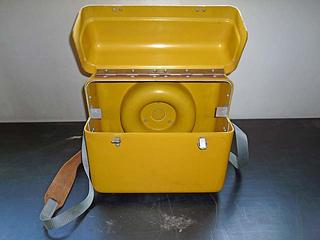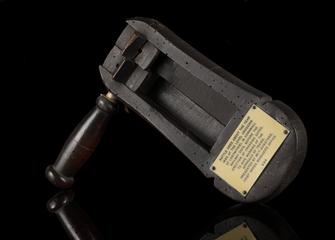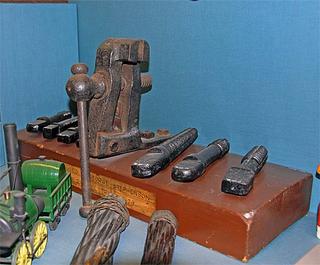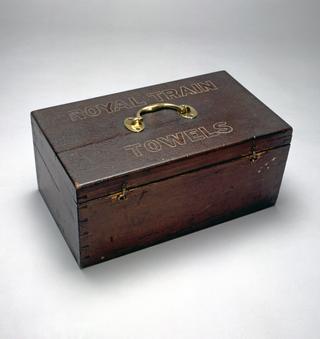
Coloured eyesight testing equipment
Eyesight testing equipment, comprising strands of different coloured wools on a folding baton, weighted with numbered lead tags. Used to test for colour blindness in railway locomotive drivers, firemen and signallers. Colloquially known as 'Thomson's stick'.
Colour blindness testing kit, used to test the eyesight of railway workers.
Accurate colour vision is essential for train drivers and signallers, as they need to be able to distinguish different coloured signals.
This equipment was devised in the 1880s by Dr William Thomson for the Pennsylvania Railroad in the USA and adopted by railway companies in the United Kingdom.
The test subject had to match coloured pieces of wool to a similarly coloured piece attached to the stick. Choosing neutral or contrasting colours indicated that the subject was potentially colour blind and they would be sent for further tests. The test only took a few minutes and could be carried out by a non-specialist, who could check the subject's responses against a list of required answers. The test equipment was sometimes known as "Thomson's stick".
Frithiof Holmgren, a specialist in the anatomy of vision at the University of Uppsala, Sweden devised the first colour blindness tests for railway workers. This followed a head-on collision between two express trains in darkness in November 1875, on a single-track line at Lagerlunda, between Stockholm and Malmo. Holmgren believed that the driver or fireman on the northbound train had mistaken a red ‘stop’ light for a white ‘go’ signal. Both men had been killed, so he couldn’t test their sight, but he persuaded the rail company to let him test their personnel. Holmgren’s test required the subjects to match selected colours to about forty skeins of wool. His experiment discovered 13 instances of colour blindness among 266 workers on one line.
Colour blindness is most common in men, with about 8% affected. Only about 0.5% of women have a form of colour blindness. This is because the genes that encode for colour vision are found on the X chromosome which carries genetic information. Men have only one X chromosome, while women have two, so they have double the chance of inheriting a functioning gene.
While colour blindness has been disputed as the cause of the Lagerlunda accident, tests for colour vision have been essential for railway drivers and signallers since the late nineteenth century.
Details
- Object Number:
- 1987-8382
- Materials:
- wood (unidentified) and lead (metal)
- Measurements:
-
overall: 1003.3 mm
- type:
- eyesight tester
- credit:
- British Rail, Historical Relics




